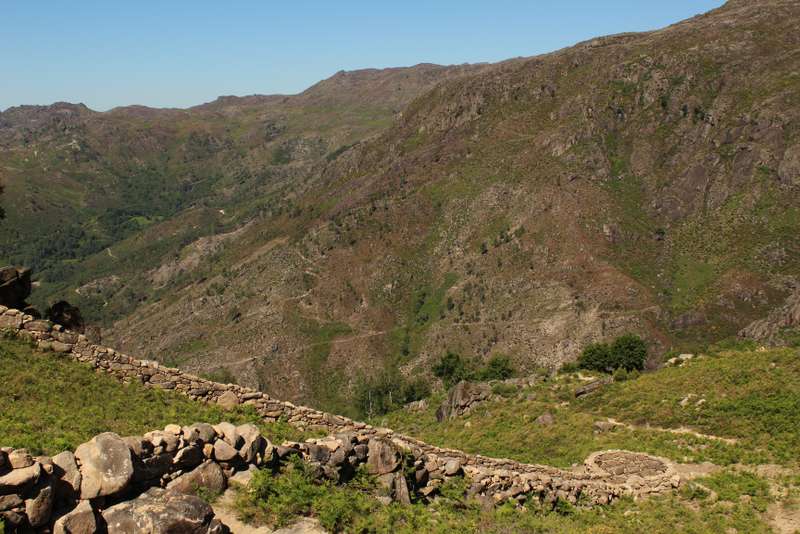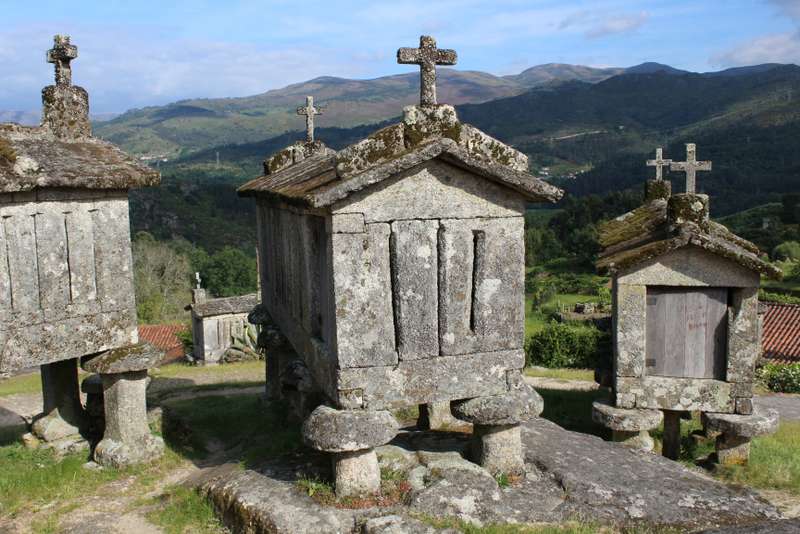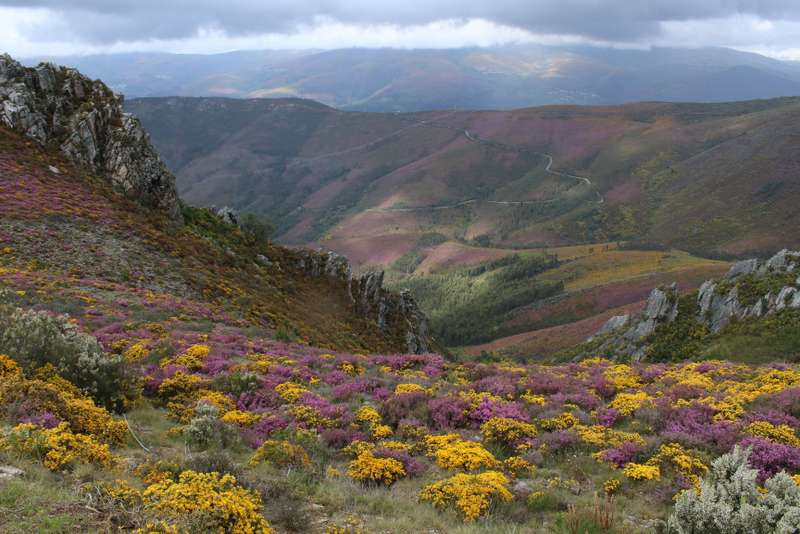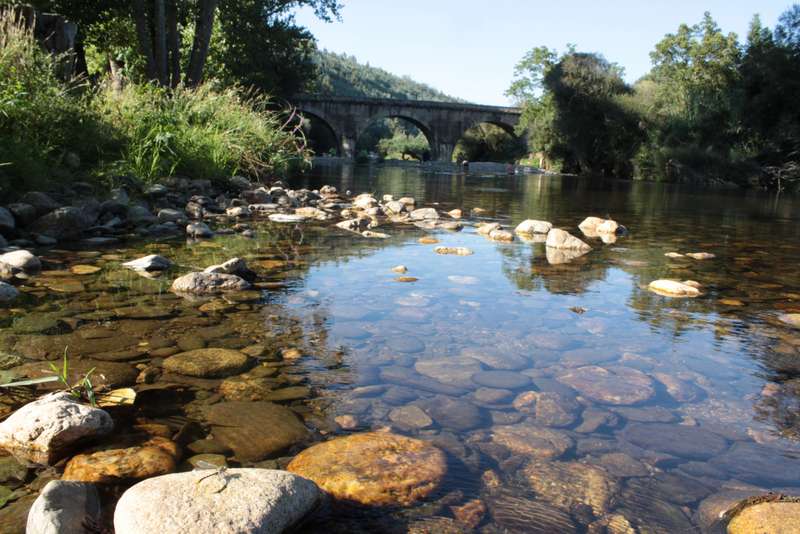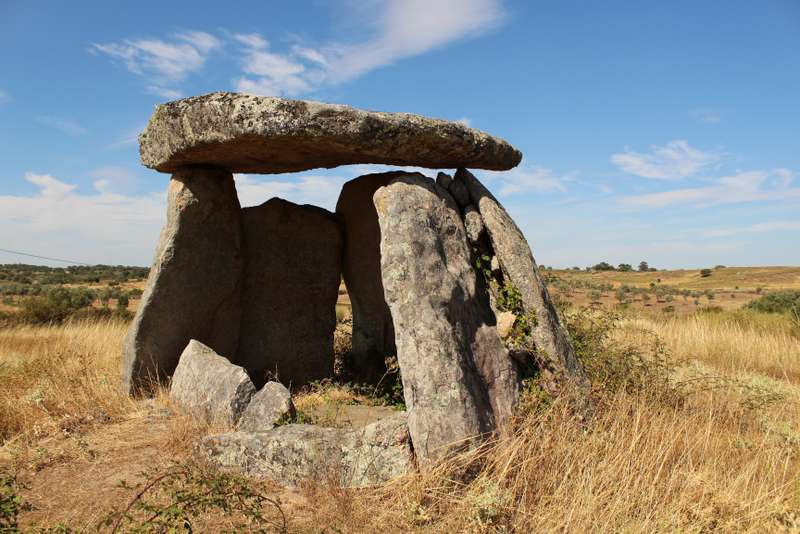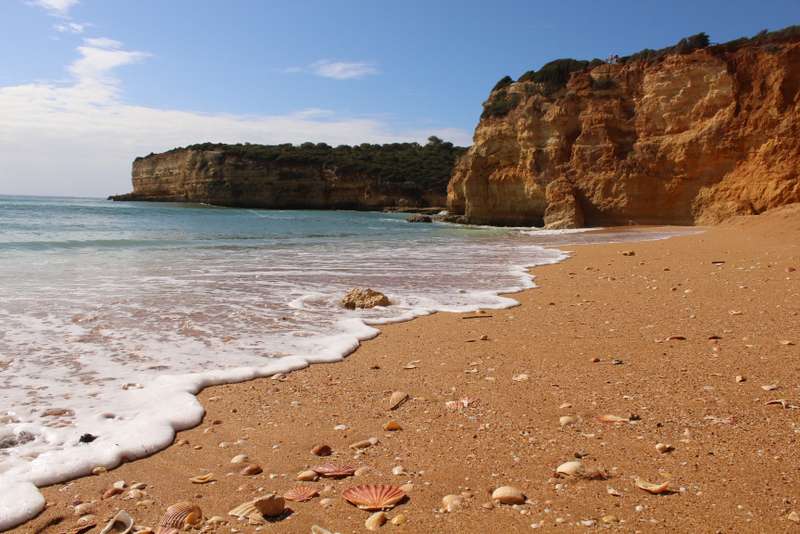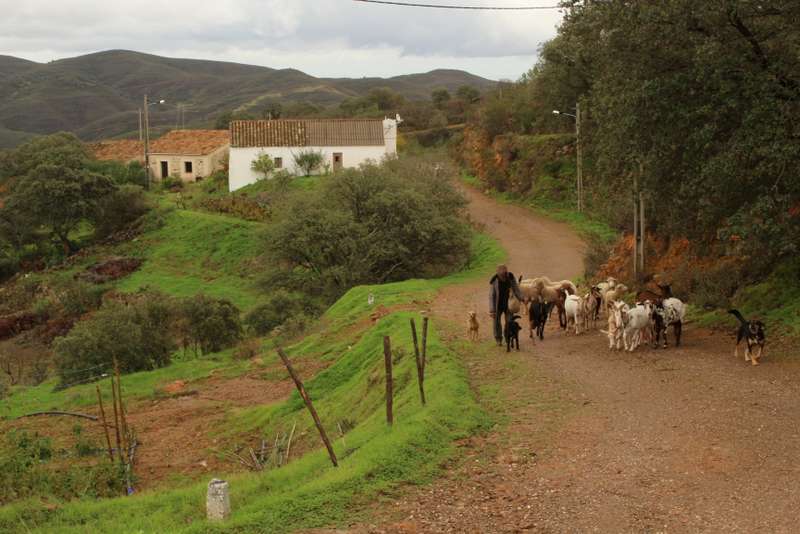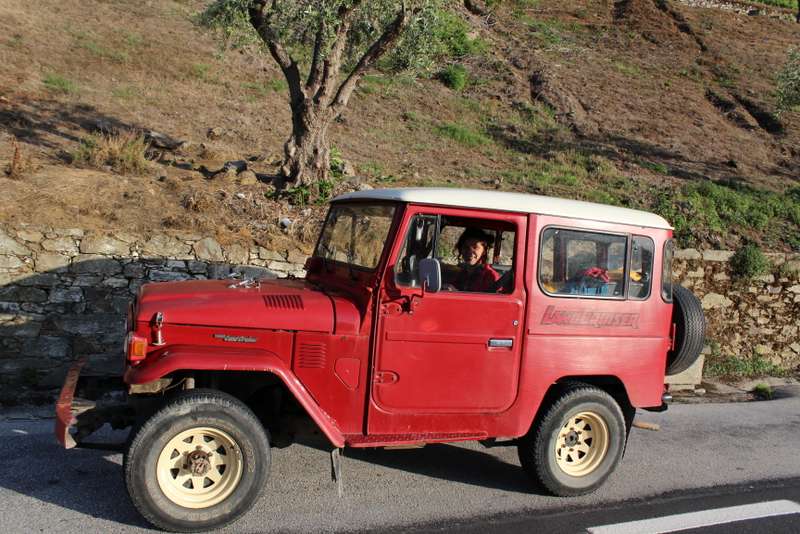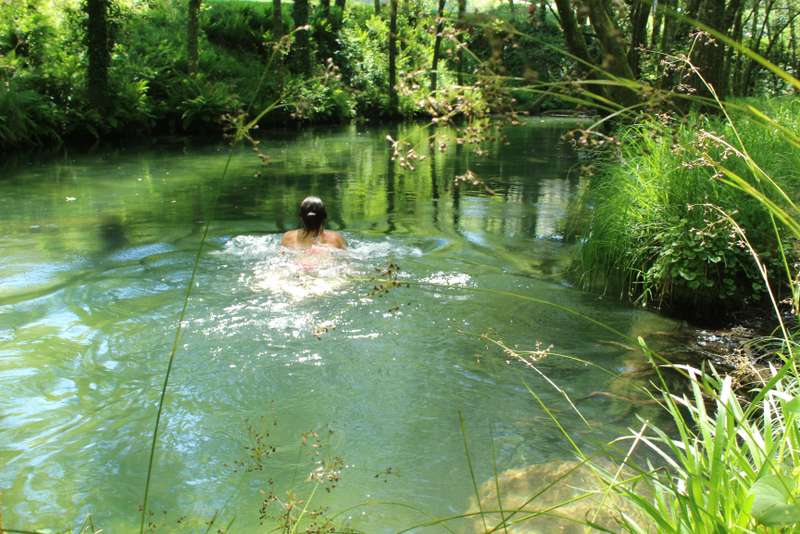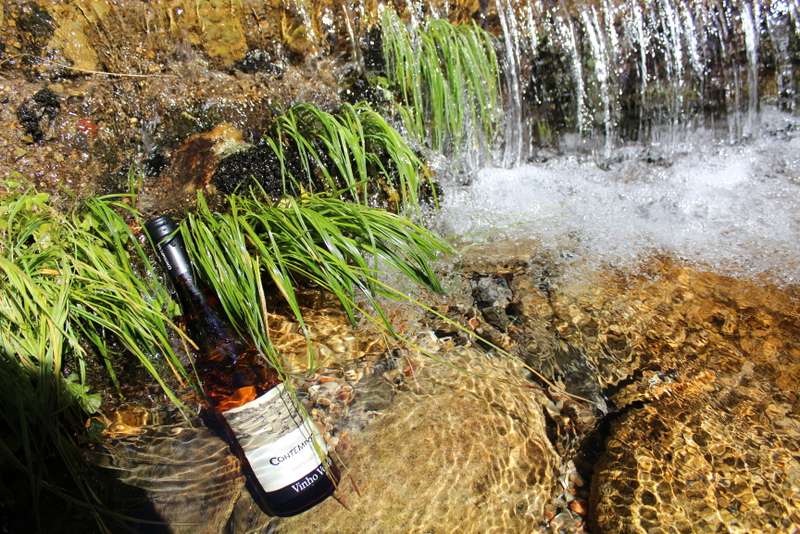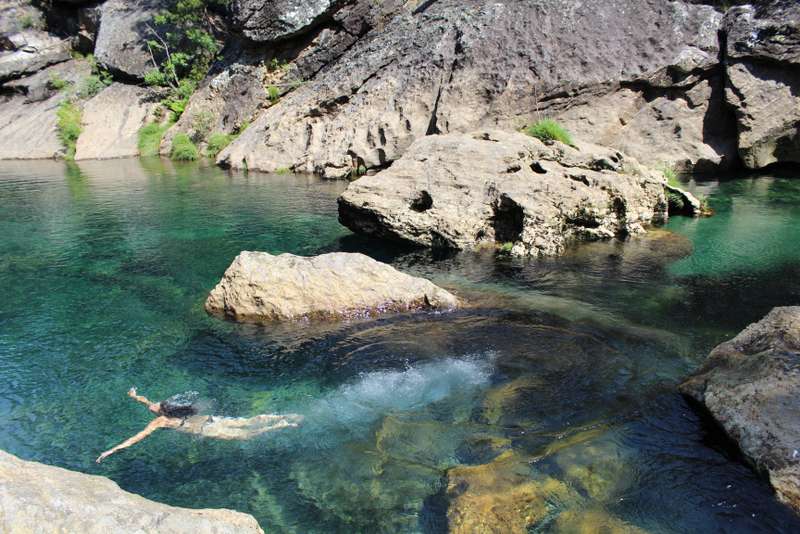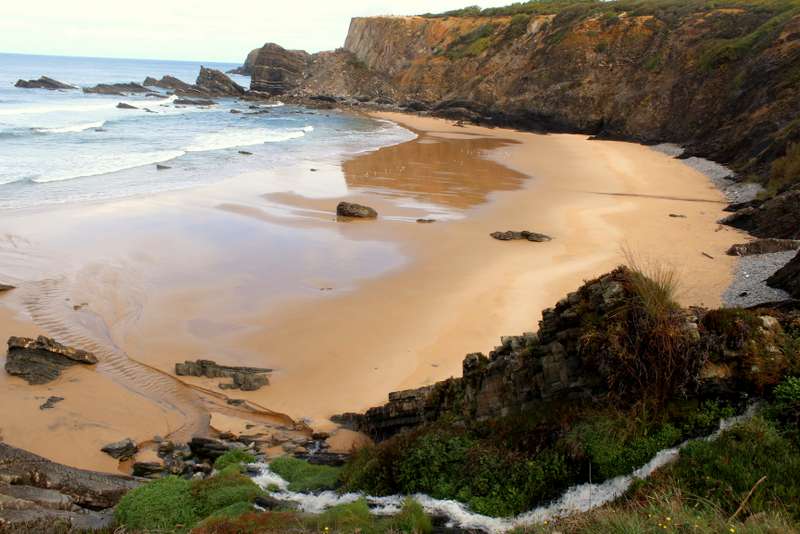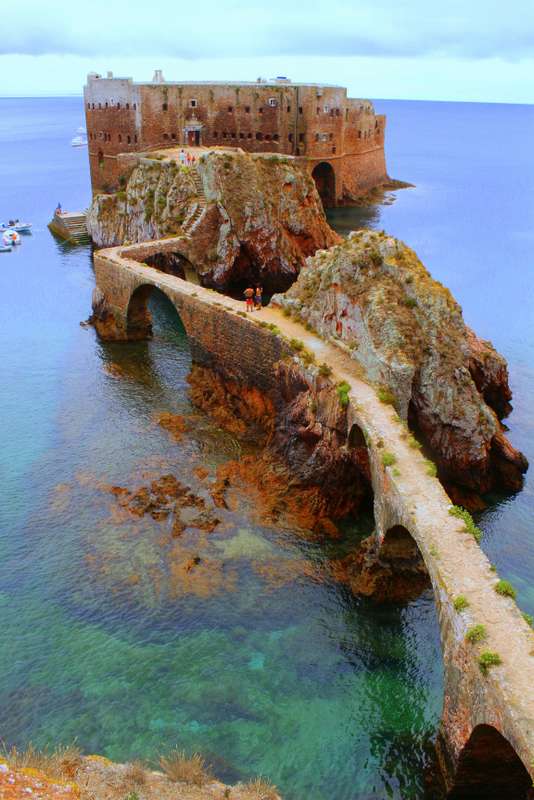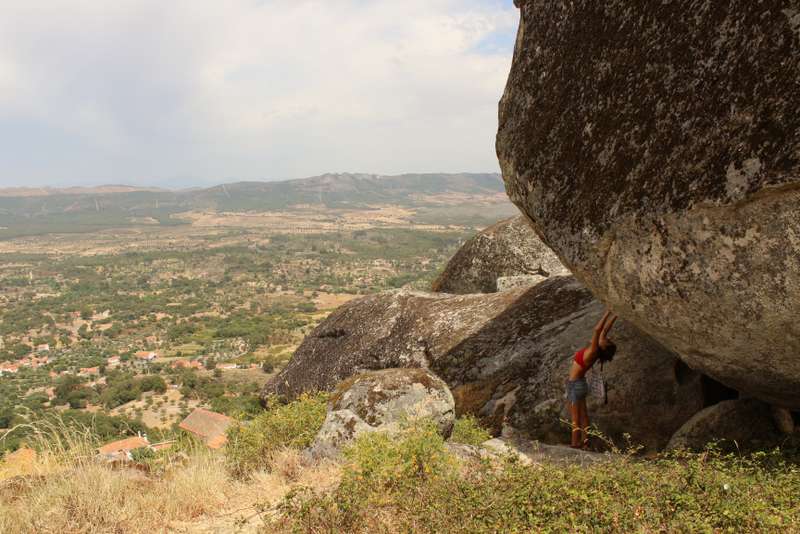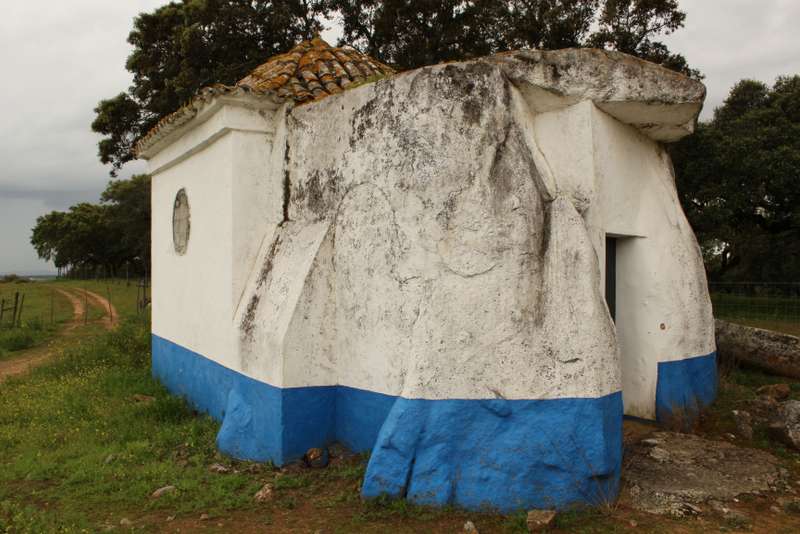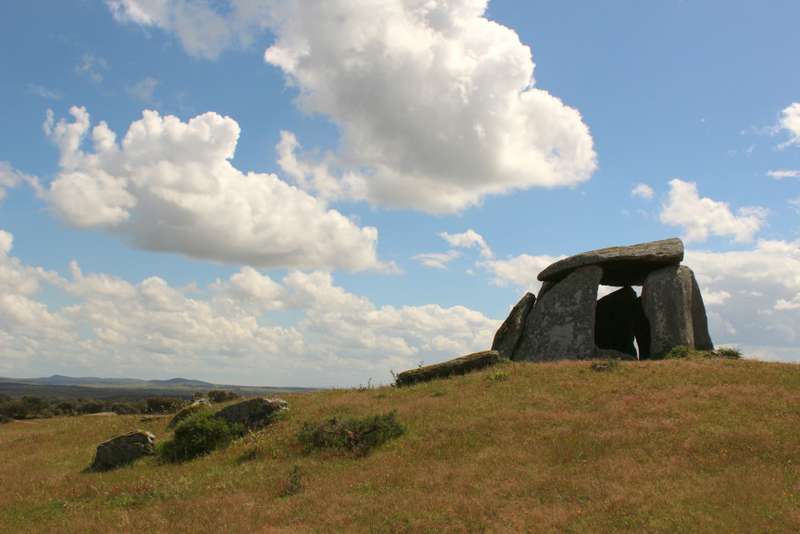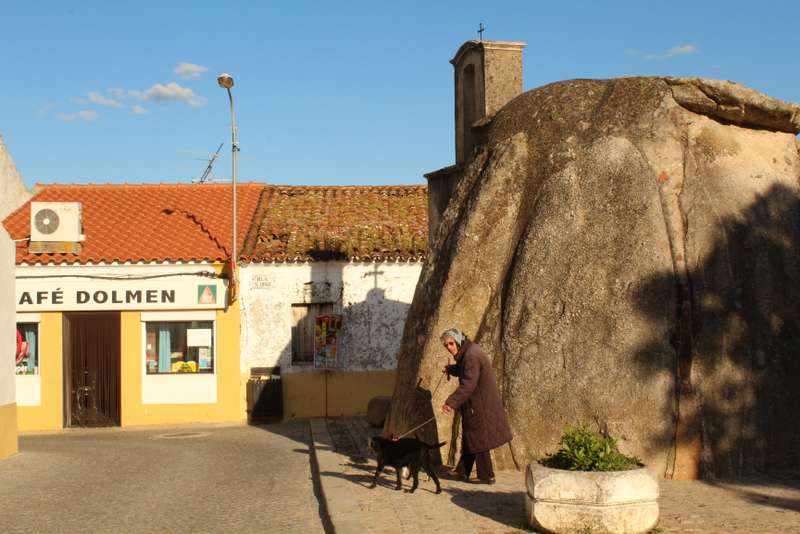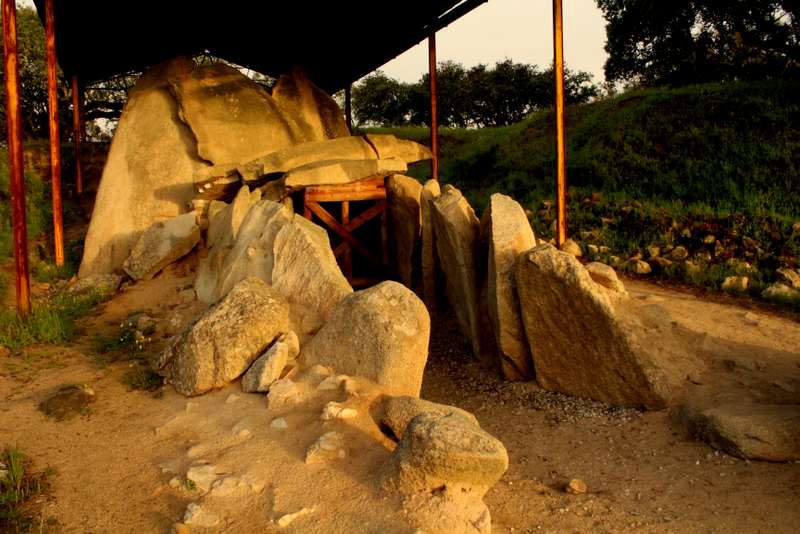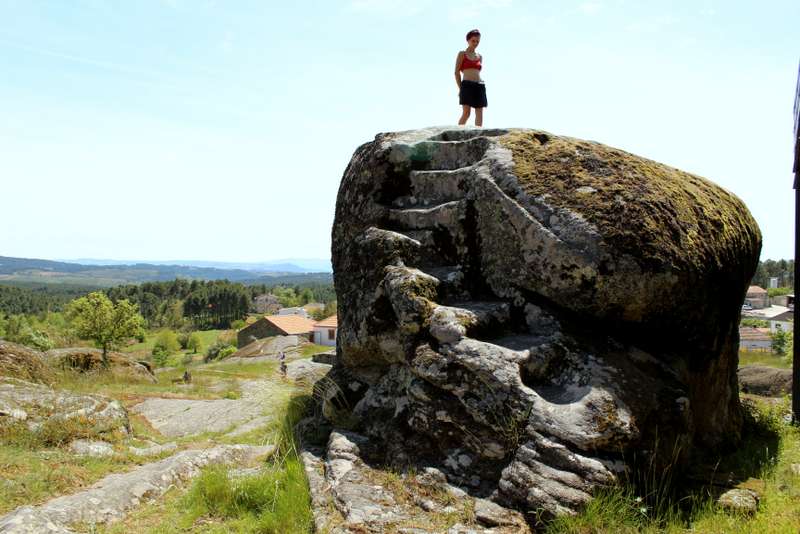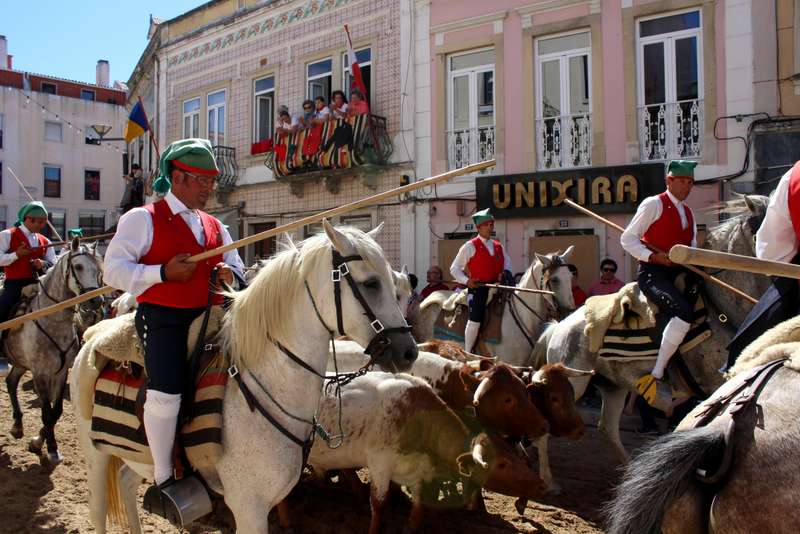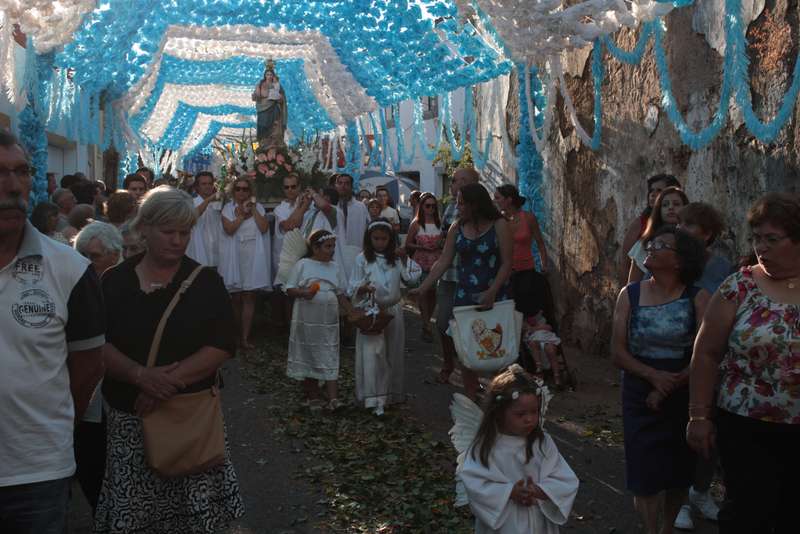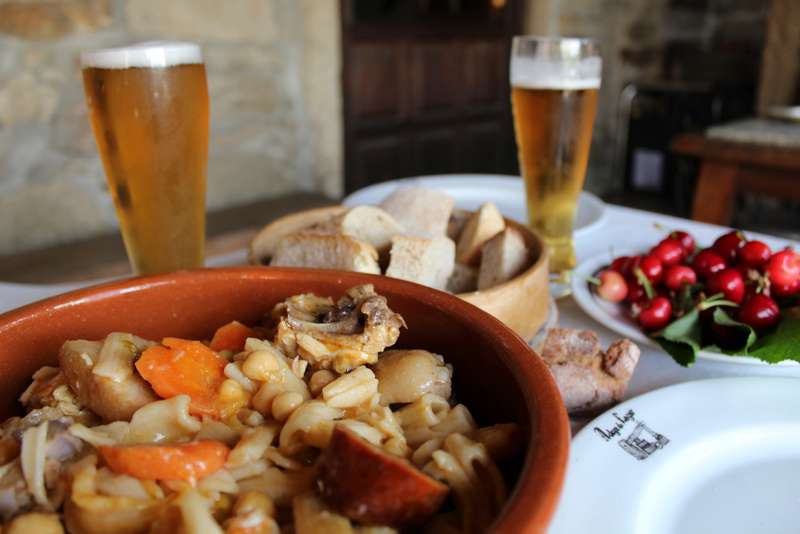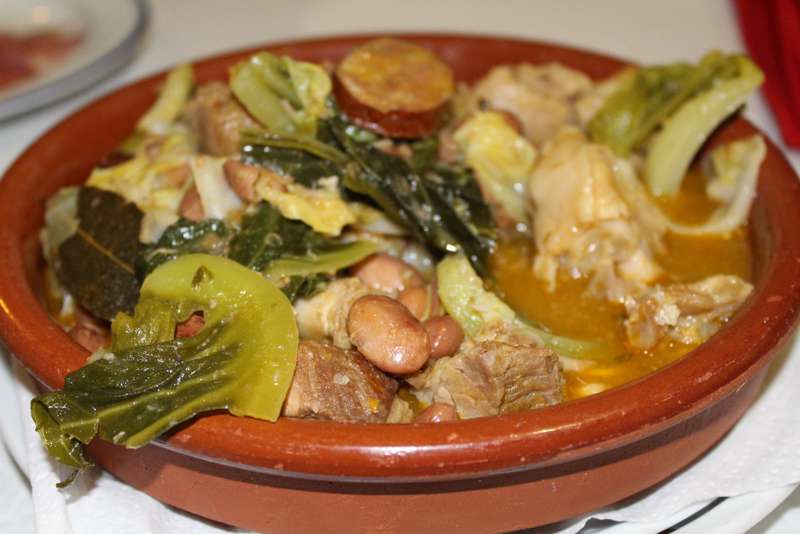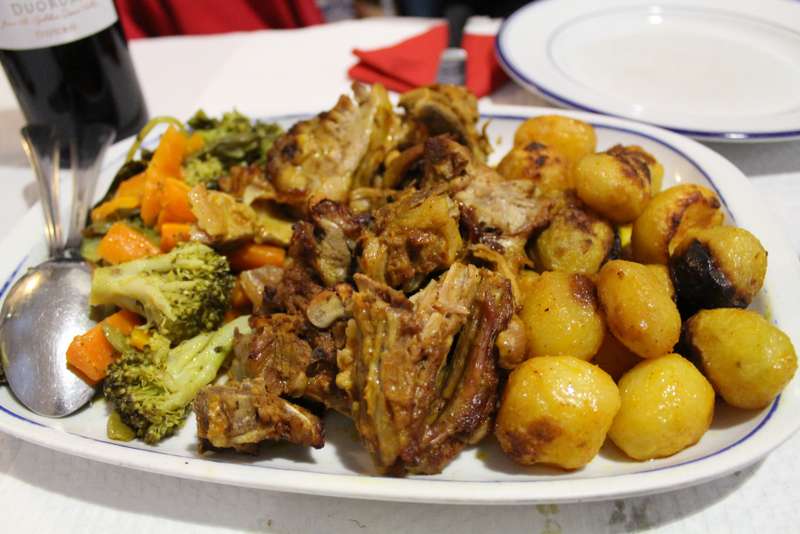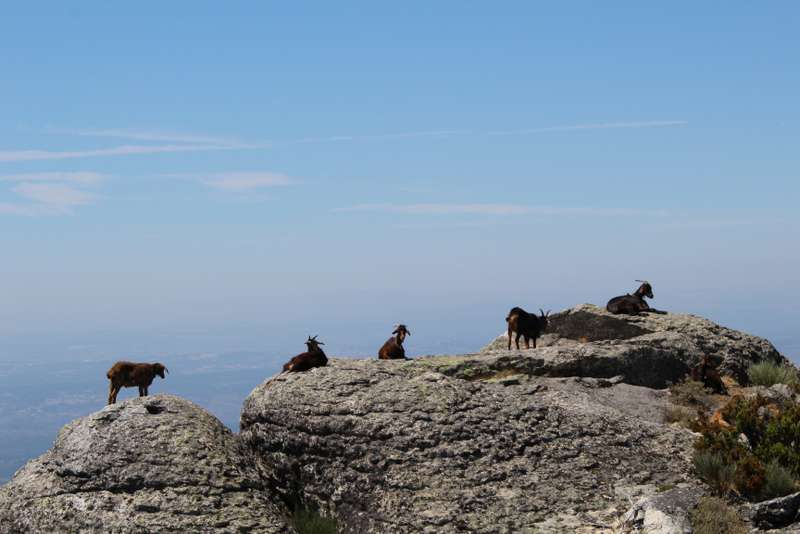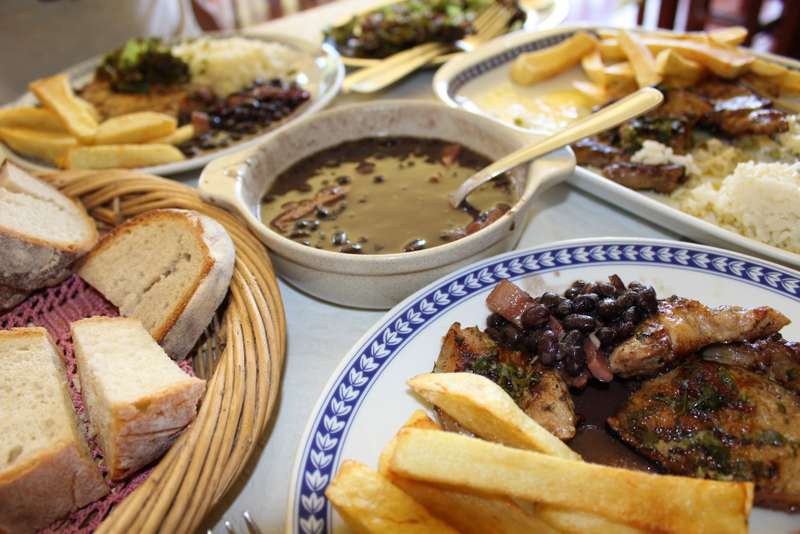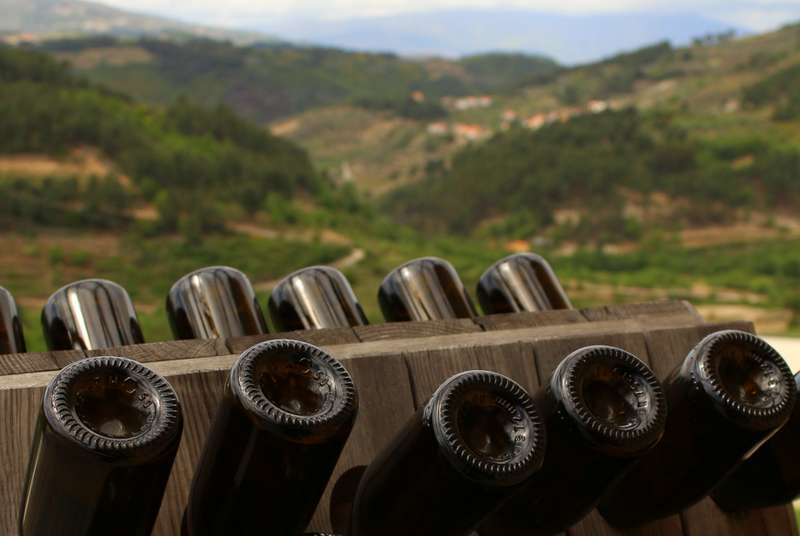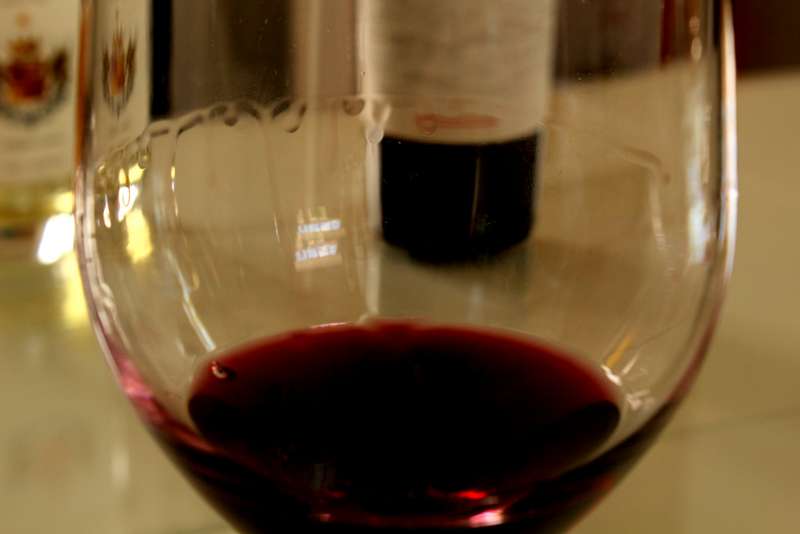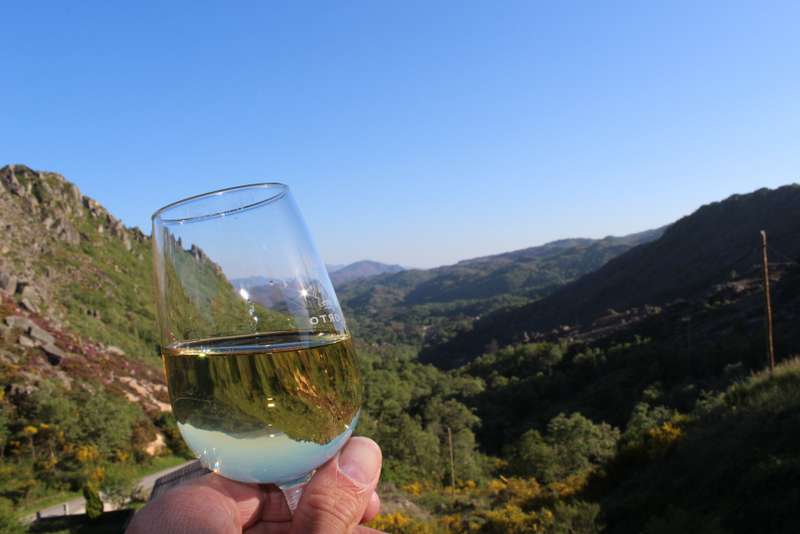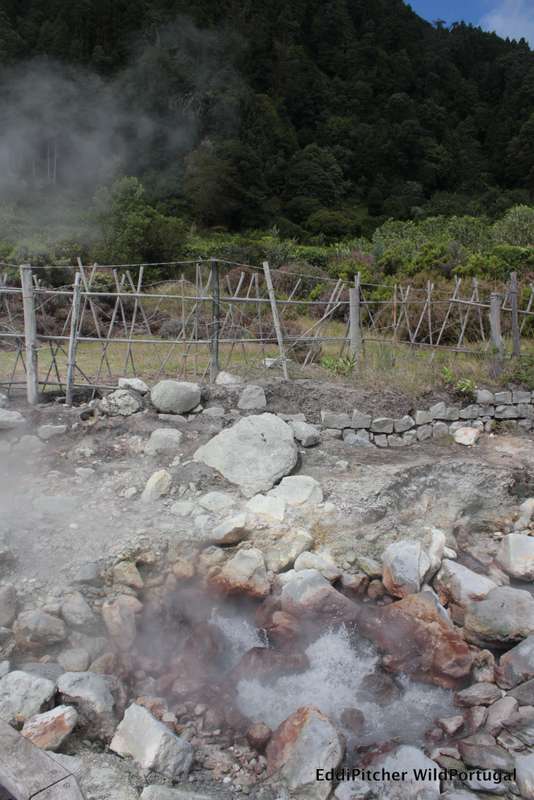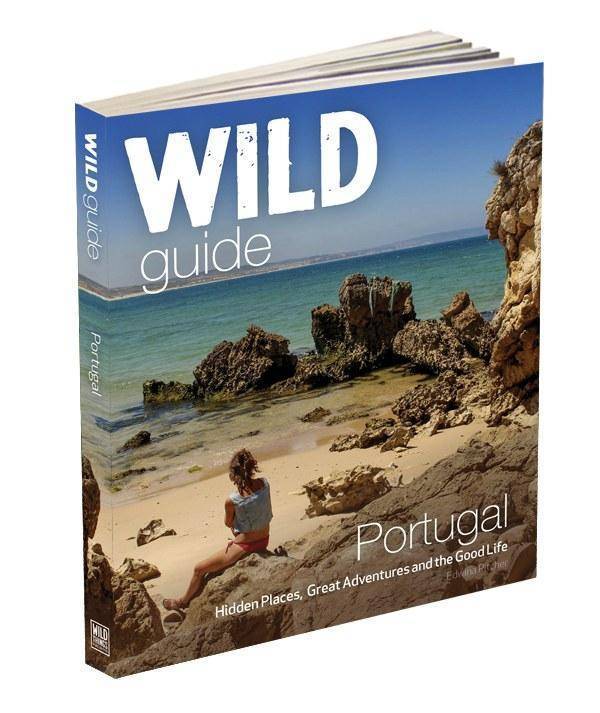Edwina Pitcher, author of Wild Guide Portugal, gave a talk at Stanfords Travel Bookshop last week in Covent Garden, where she shared some of her favourite, and less expected, wild places from that beautiful country.
While Portugal is known for its blue skies and sandy beaches but there are several unexpected wild places just inland. In 2013 I discovered many of these wild places following the Caminho de Santiago from the outskirts of Lisbon until Santiago de Compostela in Northern Spain. There are 25 such pilgrim routes leading to this sacred site across Europe, but walking the Portuguese way I began to see that you don’t need to travel very far to find wilderness. You certainly don’t need to leave Europe. The journey took a month and I followed Roman roads, fishermen’s trails and droving paths, I passed lost ruins, secluded riverbanks and dramatic hilltops. These are timeless places, places which shift the emphasis from ways we affect the natural world to what the natural world can do to us. Here are some of my favourite sites:
Fojo do Fafião
This type of wolf trap exists only in the Iberian Peninsular. Deep in the wild hills of the Gerês National Park to the north of Portugal, two tall converging dry stone walls run down the hill meeting in a pit below. Beaters would drive the wolf towards the pit. Eerily quiet here, it remains a morbid reminder of the wolf’s endangered status.
The village of Fafião is in the south of the Gerês park. Park at the café and walk 2min uphill, the walls are to your right. 2Mins, 41.7036, -8.0927
Espigueiros of Soajo
With their crucifixes dramatically facing the hills, this strange granite army resembles nothing more than the sarcophagi of a forgotten ancient hill tribe. In fact these are several corn-houses used for keeping grain off the damp ground, known as espigueiros they stand on a huge rock just outside the mountain village of Soajo.
Follow brown signs 500m south from Soajo along the M530. 2Mins, 41.8535, -8.2893
Serra da Freita
These wild hills, carpeted in purple heather and yellow gorse flower come Spring, are in central Portugal and form part of the Arouca Geopark. There are walking routes leading past mystical mountain chapels, ancient fossils, secret mining tunnels and dramatic waterfalls.
Praia Fluvial do Barril de Alva
This river beach is in one of the most watery districts of Portugal. The Alva river curves through central Portugal with many places of a river dip. At this river beach there are grassy banks and a boardwalk out to a picnic island. There is also a working watermill under the bridge.
From Côja take the N344 right onto the N517-1, signed for Barril de Alva, as far as the bridge. Park and walk down. 1Min, 40.2742, -7.9839
Anta San Gens
Alentejo is the largest region of Portugal and home to the densest collection of Megalithic sites in Iberia. There are hundreds of dolmens, known as antas, which are ancient burial structures, about 5,000 years old. Remains of necklaces, pots and weapons have been found buried at these stones. These were places where the living came to be materially connected with the dead and, in a sense, this purpose persists as the stones call out to be touched even today.
From Apalhão, take the M1176 northwest for 4km until you spot this dolmen on your right. Park and walk. 39.4480, -7.6762
Praia da Senhora da Rocha
This is the quintessential Algarve beach, its sandy shore is strewn with many beautiful shells. There is a windswept chapel on a promontory above and the whole beach is sheltered by great sandstone cliffs.
Exit N125 at Porches and follow signs to Senhora da Rocha. Park in town and walk down to the beach. 5Mins, 37.0973, -8.3857
Beliche en Cima
Drive just 40mins inland in the Algarve to discover a timeless rural heritage. Beyond the Loulé mountains, deep in Serra da Caldeirão is Beliche en Cima, a perfect example of a typical Algarve farming villages.
From Tavira take the N397 north for 20km. Turn onto the M506 after Portela de Corcha and follow for 4.5km.
After my pilgrimage, I returned time and again to Portugal to make this book. The journey continued with each month-long journey I made with Diana Matoso and her grandfather’s jeep. Diana is Portuguese, with a great knowledge of Portugal’s wild places and an inexhaustible spirit of adventure, this book would not have been the same without her. I cannot tell you all of our adventures now – you’ll have to buy the book- but I can talk about three ways we connected with the natural world.
Wild Swimming
The first way was by wild-swimming, jumping into lakes and rivers across Portugal we fully immersed ourselves in its beauty. The second way was through its ancient history, soaking up glorious sunsets from lost ruins and wild hilltops. The third way was through Portugal’s festivities and food: rural villages are likely to have the best connection with local produce. Local wines, rich regional stews and smoked meats are emblematic of how nature meets food. Fantastic ways to understand a rural place.
Paredes de Coura
This river beach hosts Portugal’s largest rock concert ever summer but the rest of the year the oasis is so tranquil that dragonflies alit on our shoulders as we swam.
41.9194, -8.5667
Vinho Verde chilling in river beach
Many of Portugal’s river beaches are great places for a picnic- with communal bbq grills and several picnic tables this is often the place where locals gather to while away a Sunday afternoon. Chill a bottle of vinho verde between river stones, Portugal’s green young wine from the north, as you laze by the riverbank.
Ponte de São João
This was a thrilling swim in the north of Portugal. A scrabble down a steep stony track yielded this vast azure pool.
41.8775, -8.7156
Praia da Amália
The southwest coast of Portugal known as the Costa Vicentina has some of Portugal’s most secluded and secret beaches. Follow the 400km walking trail known as the Rota Vicentina along fishermen’s’ paths and smugglers’ routes to discover secret beaches like this one: Praia da Amália. Amália Rodrigues was Portugal’s most famous Fado singer and in the 1950s, at the height of her fame, she would retreat to this beach. There is a fresh water cascade here and the beach is still relatively unknown.
37.4828, -8.7941
Berlengas Island
A magical place, just off the coast of Peniche, north of Lisbon. Take a fishing boat out here and the question at the harbour is inevitably, “Have you been to Earth today?” With the hundreds of seagulls wheeling and cawing overhead it certainly feels like another planet. This 15th century monastery is surrounded by ancient wrecks, perfect for diving. We swam out to a secret cave, iridescent with sparkling stones and lit by the aquamarine water. Bring a snorkel to sea hundreds of colourful fish.
39.4113, -9.5101
Castles and hilltop forts
These wild swims were exhilarating but so was travelling inland, discovering border castles and hilltop forts…
Castro Laboreiro
A wind-torn track leads to this wild castle, a 9th century Galician stronghold turned Moorish castle. Now only the eagles visit and lizards scuttle underfoot. We felt on top of the world here as we caught the wind in our hair.
42.0231, -8.1582
Castelo Lindoso
Pitching up in the 17th walls of this border castle at Lindoso, the walls made great wind barriers. Although not strictly allowed, we pitched before dusk and left at dawn.
41.8671, -8.1991
Lima Escape
Portugal has several campsites that make the experience of sleeping out under the stars all the more luxurious. Glamping in Lima Escape we had all the luxury of a five star hotel while waking to birdsong over the Lima river.
41.8239, -8.3174
The surrounding hills of the river Lima were so green and lush the invading Romans thought them to be Elysium, their heaven. They refused to cross the river Lima, believing it to be the river Lethe, river of forgetfulness in their underworld, until that is Brutus waded through and called each of their names, one by one, to prove his memory.
Monsanto Castle
The landscape changes hugely in Castelo Branco district, in south central Portugal. At Monsanto castle we could survey all the Raiana flatlands until Spain. The Templar knights who built here clearly recognised its strategic location. The landscape was almost lunar, with great boulders scattered like marbles. This photo of Diana doing some boulder-yoga gives you an idea of their scale.
40.0363, -7.1133
Dolmens and sacred sites
The Alentejo region in the south of Portugal, has the densest population of Megalithic sites in Iberia, we became dolmen hunters- if you can ‘hunt’ something which has remained stationary for 5,000 years that is…
Anta da Candeeira – this dolmen has a window, thought to be a soul-hole, ready for the soul to fly away 30.7039, -7.5527
Anta do Livramento – dolmens that have become churches… 38.5248, -8.1292
Anta do Tapadão – dolmens with cathedral like cavities beneath 39.2973, -7.7129
Anta São Dinis – this one I simply loved for its quirkiness – in the middle of Pavia village. Swallowed flew in and nested above its altar. 38.8942, -8.0170
Anta Grande do Zambujeiro – this is the largest dolmen in Iberia and beautifully aligned for sunset. Sit with your back to the sun-warmed stones and watch hares leap as dusk falls. 38.5391, -8.0143
Santuário de Panóias – A sacred site and a 2nd century Roman temple to Serápis, the god of the underworld. Although no human sacrifices were made here, you can still feel the energy and imagine the drumming and euphoria as the sun beats down on stone. I dropped my pen on top of this rock and it rolled perfectly down a carved blood channel.
41.2834, -7.6819
Festivities
History is also kept alive through Portugal’s festivities and traditions- which takes me onto food, my final way to connect with the natural world.
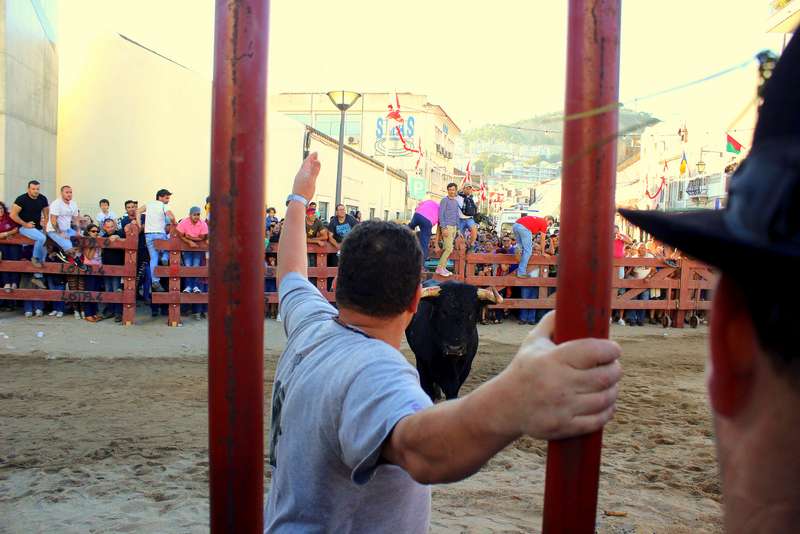
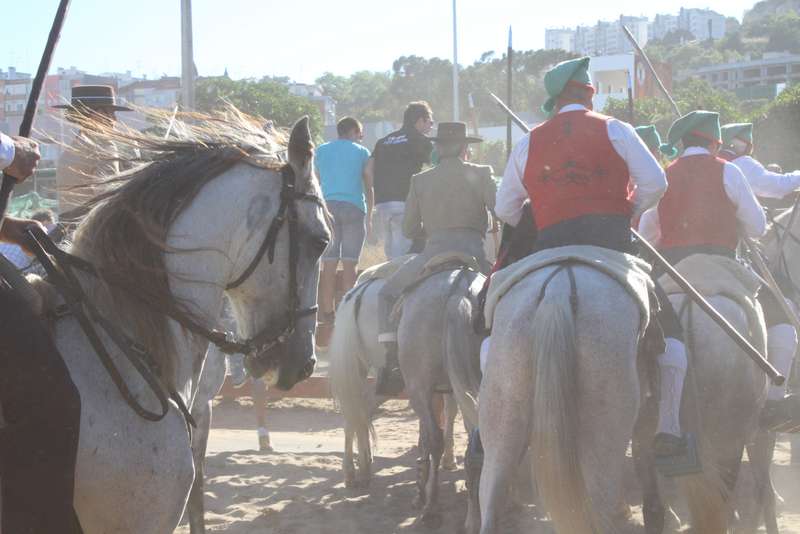
At Colete Encarnado, a horse festival in Vila Franca da Xira, the wild literally charges into town. This is the region of the Lusitano horses and every year they celebrate their heritage and livestock with a great procession into town. There is a bullfight too, every street is covered with sand and sawdust. Remember, if you are on sawdust then you are in the bullring.
Early July. 38.9549, -8.9871
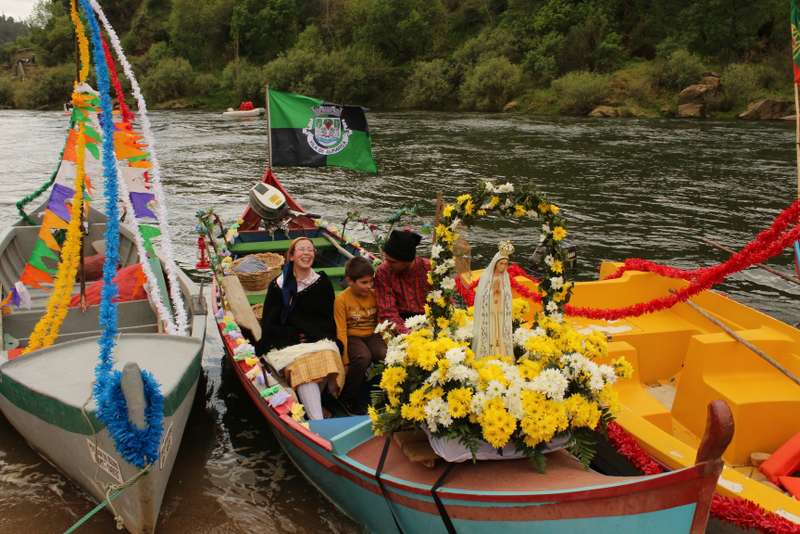
During Summer festas and festivals spring-up across Portugal’s rural villages like blossoming flowers. Visit Pereiro to see streets strewn with wild herbs and flowers in celebration. At Constância, an ancient fishing village along the Tejo, boats decked in flowers set sail only to return for a huge party with dancing late into the night. These festas are also some of the best places to try local food and regional wines.
Food and fish
Portugal is well known for its fish. Fresh fish grilled by the sea or a dressed crab eaten on the beach is one of nature’s simply joys. But head upstream to discover freshwater trout or ancient fishing villages like Carrasqueira (46 & 47) where you can feast on razor clam rice. (Carrasqueira 38.4127, -8.7565 Eat at Restaurante Retiro do Pescadore +351 265 497 172, 38.4097, -8.7516)
The mountain villages and rural inland communities of Portugal are the places to feast on smoked meats, blood sausages, cured hams known, as fumeiro. Or try hearty mountain stews like feijoada, a rich bean stew that will fuel a hike up the highest mountain.
Adega do Lagar, Covas
A family run restaurant with a wood oven and locally sourced meat, wine, vegetables and bread.
Ponte Covas, +351 251 948 064, 41.8777, -8.6898
A typical hearty dish in Portugal – feijoada – bean stew made with pork shoulder and smoked sausages.
Cabrito Assada a heavenly dish. Roast goat made in a wood oven, this is a classic dish across all of inland Portugal.
From the fresh young vinho verde in the north of Portugal, to the classic dark reds of Douro and Porto until further south in Alentejo with their lighter joyful reds, every region of Portugal produces its own wine. The Conde d’Ervideira winery, in Alentejo, buried several cases of red wine in oak barrels to age for 10 years under the Alqueva reservoir. Sip a glass at sunset and rejoice in the fruits of the vine. (For Ervideira visit 7200-175 Monsaraz, +351 266 557 099, 38.4429, -7.3807)
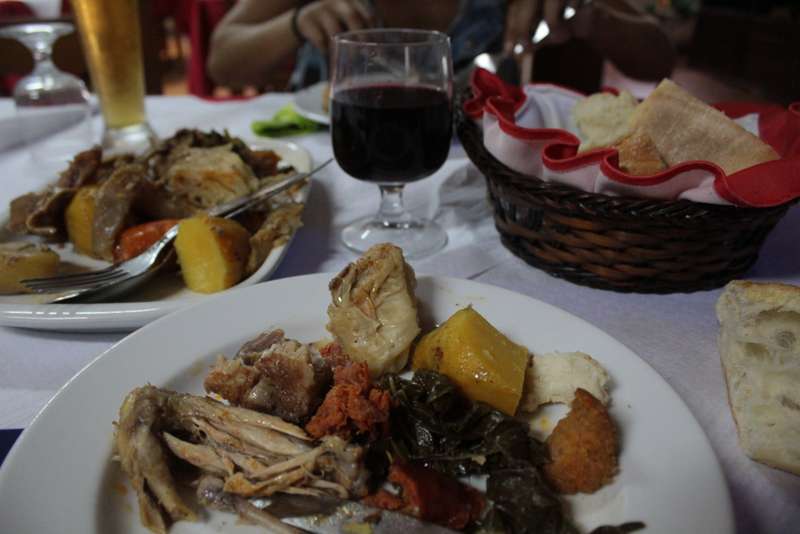
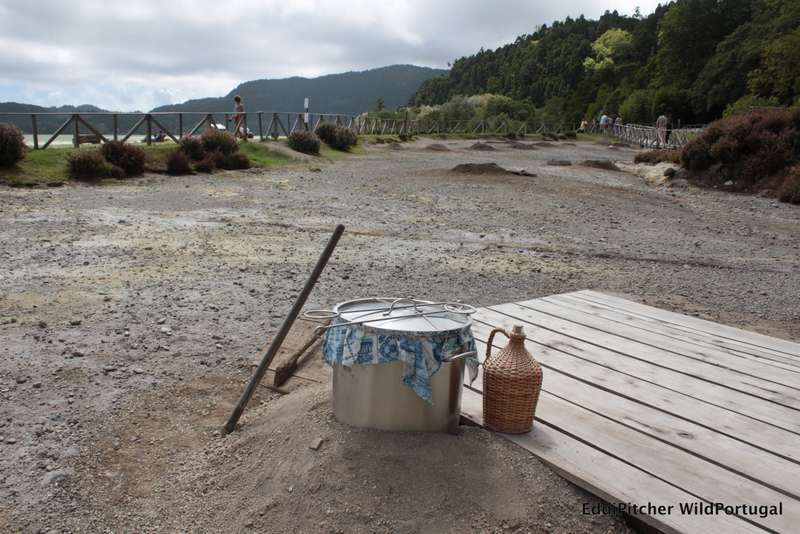
If nature gave Portugal great seasonal produce then it also gave the ovens in which to cook it. On São Miguel island, Açores, we felt we were in the bubbling heart of nature’s kitchen. Cozido stew is lowered into volcanic vents and slow-cooked for 8 hours. The stew had a slight sulphuric bite to it, delicious.
(To see the stew cooked visit Lagoa das Furnas, 37.7675, -25.3319
To feast on the stew try Restaurante Aguas Quentes, 9675-040 Furnas, +351 296 584 482, 37.7675, -25.3187)
About the book
Essentially, this has been a marvellous adventure. It is also more than that, I hope the book inspires alternative tourism, which celebrates our natural wild places and rejoices in them. I hope it will inspire travellers to value our shared European heritage and understand the wild as a part of that. And I hope it inspires many more wild adventures.

